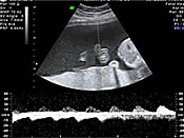Residency Programs
PGY 3 Year
Obstetrics & Gynecology Residency Programs
 The third year of residency (PGY-3) is divided into: High Risk Obstetrics, Gynecologic Oncology, Urogynecology, Night Float, Family Planning, Reproductive Endocrinology & Infertility, Ambulatory Care and Community OB/GYN.
The third year of residency (PGY-3) is divided into: High Risk Obstetrics, Gynecologic Oncology, Urogynecology, Night Float, Family Planning, Reproductive Endocrinology & Infertility, Ambulatory Care and Community OB/GYN.
High Risk Obstetrics
Reproductive Endocrinology and Infertility
Gynecologic Oncology
Night Float
Community OB/GYN
Ambulatory Care
Urogynecology
Family Planning
Continuity Clinics
Breakdown of Rotations
High Risk Obstetrics
During this rotation, the resident is in charge or running the high risk obstetric/antepartum service with maternal fetal medicine. They cover high risk OB procedures including cerclages, amnioreductions, PUBS, etc.Reproductive Endocrinology and Infertility
During this rotation the resident will learn to apply knowledge of reproductive physiology and pathophysiology to diagnose and treat gynecologic conditions including menstrual abnormalities, infertility, pubertal disorders, and menopause. The resident will participate in the office and surgical care of REI patients under the direct supervision of the reproductive endocrine faculty.
Gynecologic Oncology
This rotation is similar to the PGY-1 and 2 year rotations, with the exception of a graduated increase in the amount of responsibility and covering more complicated oncologic procedures as the first assistant with the attending.
Night Float
Night float consists of one resident from each year. The PGY-3 resident's primary role is covering the high risk obstetrics service and the gynecologic oncology service. Weekday night call is a rotation beginning at 5:30 p.m. and ends at 7 a.m., Sunday - Thursday nights. Each weekend is free until Sunday evening.
Community OB/GYN
The purpose of this rotation is to allow residents to get exposed to community OB/GYN. Residents rotate in a rural community setting and practice low risk obstetrics, participate in gynecologic surgeries, and see patients in clinic.
Ambulatory Care
Exposure to all aspects of caring for women in obstetrics and gynecology clinics forms the basis of this rotation. The resident will cover clinics serving patients with high risk pregnancies in addition to complicated gynecologic disease. The resident also receives first-hand experience with colposcopy and LEEP procedure in addition to routine obstetric and gynecologic visits.
Urogynecology
This rotation is similar to the PGY-2 Urogynecology rotation with clinical responsibilities split between ambulatory care of patients with pelvic floor disorders and the medical and surgical management at Planned Parenthood.
Family Planning
The Family Planning rotation is an opt-out rotation. The rotation consists of family planning didactics, GYN ultrasound, Planned Parenthood, and MVA/miscarriage management clinic. If a resident chooses to opt-out of providing terminations at Planned Parenthood, they will still have the opportunity to provide contraception counseling, LARC placement and miscarriage management at Planned Parenthood.
Continuity Clinics
The resident has their own continuity clinic and patients. Continuity clinics are half-day clinics during every rotation except OB Days and OB Nights.
Breakdown of rotations:
Fall: High Risk OB Days, Night Float, Family Planning, GYN Oncology, Reproductive Endocrinology and Infertility, OB/GYN Float
Spring: High Risk OB Days, Night Float, GYN Oncology, Ambulatory, Community OB/GYN, Family Planning, Urogynecology
